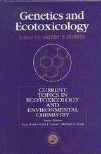Papers in the Biological Sciences

Valery Forbes Publications
Document Type
Article
Date of this Version
1990
Citation
Published in Oecologia 83(1990), pp. 53–61.
Abstract
We test the hypothesis that body size and population density of the deposit-feeding gastropod, Hydrobia truncata, are greater in muddy than in sandy habitats as a result of faster growth on fine- compared to coarse-grained sediments. We refute this hypothesis using a combination of field measurements and laboratory experiments. Three out of three populations tested had higher maximal growth rates and two of three populations approached their asymptotic size more quickly on sand than on silt-clay fractions of natural sediment. Growth decreased with increasing snail density and was as high or higher on sand as on silt-clay at all densities. Two populations were more fecund on sand than on silt-clay, and fecundity of the third population was not affected by sediment type. We show that the smaller body sizes observed in snails from the sandiest habitat result from late recruitment of these snails, relative to the other populations.


Comments
Copyright © 1990 Springer Verlag. Used by permission.